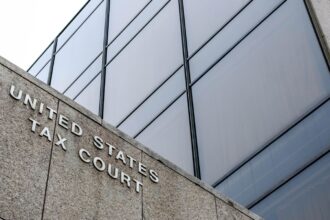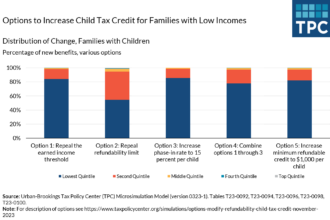While Treasury and the IRS are still mulling over what procedures should apply to the direct pay election in section 6417, credit transfer deals are being worked out for the companion financing provision of the Inflation Reduction Act in section 6418, despite a lack of guidance. Applicable entities and taxpayers that might want to choose direct pay for the three provisions that temporarily open it to a broad group are looking forward to finding out how to apply for it. The scope of the application process and the length of time Treasury and the IRS take to process the applications will be major factors in evaluating the new regime’s appeal to entities and taxpayers.
There is effectively no direct pay until there are procedures for applying for it, and even after those procedures are established, it may be a while before anyone receives any cash under the new provision. Section 6417(h) says Treasury will provide “guidance to ensure that the amount of the payment or deemed payment made under this section is commensurate with the amount of the credit that would be otherwise allowable.” Applicable entities in particular may be hesitant to start moving forward on deals without guidance because the nature of the application process may make a material difference in the transactions they participate in.
One of the difficulties that Treasury faces in drafting the procedural guidance is navigating between the Scylla of high efficiency and the Charybdis of perfect accuracy. Procedures that make it easier for applicable entities and taxpayers claiming the three special credits to apply for and receive their payments in an efficient and timely manner need to also guard against fraud. Treasury will of course want to avoid making payments to entities and projects that aren’t eligible.
The Path for Applicable Entities
If applicable entities aren’t permitted to elect direct pay for credits transferred to them, it seems likely that the subset of applicable entities that cover a relatively small geographic area typically won’t make multiple elections. That would mean that the opportunity costs of learning the ropes of the application process for those entities are high. GRID Alternatives, a nonprofit installer of clean energy technologies, noted in its comments that the guidance should recognize that applicable entities may not be “repeat customers” that “recoup a significant initial investment of effort in registration over multiple projects.”
A streamlined process will help all types of applicable entities access direct pay if they have a qualifying project, but clarity and ease of use will likely be even more important to smaller, less well-resourced entities that may only have one project. One option for lightening the load on some applicable entities is to separate the categories of applicable entities in section 6417(d)(1)(A) into groups and tailor the procedural and documentation requirements to reflect the different credits, market segments, and project types present in each group.
In a similar vein, states and political subdivisions, the Tennessee Valley Authority, Indian tribal governments, Alaska Native corporations, and rural electricity co-ops might be given a less onerous application process on the grounds that they generally present smaller potential fraud risks than nonprofits and taxpayers electing the clean hydrogen, carbon capture, and advanced manufacturing production credits. A county in Indiana doesn’t present the same risk of folding and disappearing with the tax payment as a nonprofit that was formed last week. Accordingly, the procedural guidance might require greater due diligence for nonprofits and taxpayers that aren’t applicable entities claiming the three eligible credits.
Documentation in Section 1603
The section 1603 grant program from the American Recovery and Reinvestment Act of 2009 is a likely candidate to serve as a template for documentation requirements, particularly in the case of investment tax credits. Treasury learned from that program, and it can apply those lessons here. The point of section 1603 was to, in Treasury’s words, “temporarily fill the gap created by the diminished investor demand for credits,” propping up the job market and expanding the use of clean and renewable energy. Section 6417 has similar, but generally longer-term, objectives.
The direct pay guidance will have to modify the section 1603 procedures to account for the differences between the programs. For example, the grant program didn’t include production tax credits; section 6417 does. This probably means that some form of production verification, likely by a third party, will become part of the process for claiming direct pay. There are already certification requirements, including third-party verification, in place for the carbon capture credit in section 45Q. The hydrogen credit guidance under section 45V and the advanced manufacturing production credit under section 45X will likely include similar verification requirements.
The section 1603 procedures give us a clue as to what the specifics of those verification procedures could look like. Under that program, applications could only be submitted after the property was either placed in service or under construction. Applicants had to submit an application form, supporting documentation, signed terms and conditions, and payment information.
In addition to excluding production tax credits, the section 1603 program excluded categories of entities that are applicable entities under section 6417. State and local governments, agencies and instrumentalities of the federal government, and nonprofits were not eligible for payments. In contrast, the direct pay guidance will have to include application procedures for all those entity types, which could differ depending on the applicable entity’s category as discussed above.
If Treasury and the IRS permit applicable entities to elect direct pay for credits that are transferred to them under section 6418, the section 6417 procedural guidance will need to include additional safeguards and documentation requirements for that application process. Under section 1603, the applicant had to be the owner or lessee of the property and must have originally placed the property in service. Applicants also had to submit supporting documentation, such as design plans for eligible property and final engineering design documents bearing a stamp from a licensed professional engineer, with their application. The recipient of a transferred credit has a different relationship to the property in question, and Treasury and the IRS will need to craft documentation requirements that reflect that difference while still safeguarding against inappropriate payments.
Bridge Financing
There are potential timing pitfalls for applicable entities and taxpayers hoping to elect direct pay for hydrogen, carbon capture, or advanced manufacturing credits, because the election is due at the same time as the tax return for the tax year for which the election is made, or on the date determined by Treasury for governments and political subdivisions. Some entities may need bridge financing for the period before they receive the payment from Treasury. The requirements of those loans, as well as the length of the loan period, may have an impact on the transaction costs that entities incur, which could in turn raise further obstacles for applicable entities. GRID asked that the guidance provide applicable entities with information about when they can expect to receive the actual payment and that the processing time between election and payment be minimized. Treasury might not want to specify exactly when payments will go out, in part because that could be hard to predict until some applications have been processed, but the guidance should provide clear direction about when and what to submit to help expedite the review.
One-size-fits-all procedural guidance probably isn’t wholly consistent with the statute, although it might be administratively simpler for the IRS. Specific, tailored requirements have much greater appeal among applicable entities, as they are likely to make it easier for them to elect direct pay. The Pechanga Band of Indians, for instance, asked for tribal-specific guidance so that tribal governments would know exactly how section 6417 applied to them, as well as guidance on bridge financing and the Tribal Energy Loan Guarantee Program. The Pechanga also requested that Treasury solicit comments and review the submission process after the first year to make improvements as necessary. Considering the clear intent in section 6417 to expand clean energy production to entities that were not involved in energy tax credits before, this is a reasonable recommendation.
Comments also requested that applicable entities be allowed to receive payments under section 6417 more frequently than once a year, or before the placed-in-service date. Section 6417 gives Treasury broad authority, but it doesn’t appear to provide for that degree of flexibility in making the payments. However, Treasury should be able to accept submissions immediately after the placed-in-service date, which could help to shorten the length of time in which bridge financing might be needed.
The coming guidance likely won’t give everybody everything they want, but there is plenty of scope for Treasury and the IRS to strike a reasonable balance between application and documentation requirements and protecting the fisc.
Read the full article here









